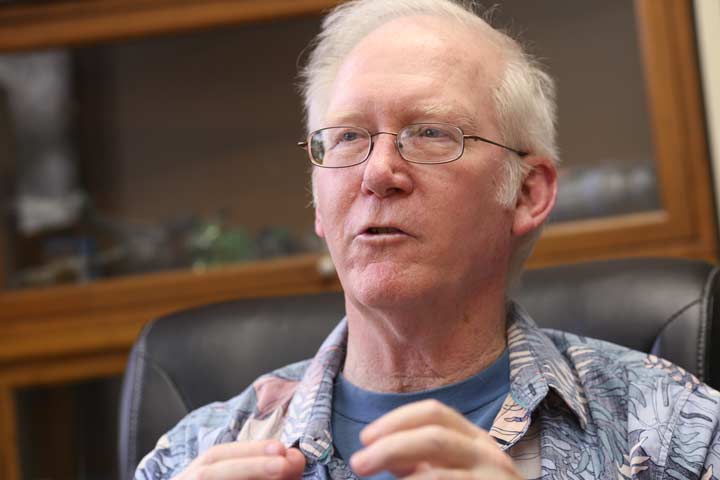
LEAP would be mounted on the International Space Station (ISS) to study the energetic jets launched during the explosive death of a massive star or the merger of compact objects.
University of New Hampshire
In collaboration with Marshall Space Flight Center (MSFC), the Center for Space Plasma and Aeronomic Research (CSPAR) at The University of Alabama in Huntsville (UAH) has a significant role in LEAP – the LargE Area burst Polarimeter – a mission that is one of four proposals approved by NASA for further review.
After further evaluation, NASA will select two of the proposals in 2021 to be the next astrophysics missions under the Explorers Program. Selected missions will be targeted for launch in 2025.
LEAP would be mounted on the International Space Station (ISS) to study the energetic jets launched during the explosive death of a massive star or the merger of compact objects such as neutron stars.
LEAP's measurements of polarization in gamma-ray bursts could distinguish between competing theories for the nature of the jets, which move out at close to the speed of light. LEAP would complement NASA's Imaging X-ray Polarimetry Explorer (IXPE), scheduled to launch in 2021. The mission’s principal investigator is Dr. Mark McConnell at the University of New Hampshire in Durham.

Dr. Robert Preece is UAH’s principal investigator and the science data manager for the LEAP collaboration.
Michael Mercier | UAH
At UAH, Dr. Robert Preece, a CSPAR assistant director and associate chair and associate professor of the Department of Space Science, is the university’s principal investigator and he will be the science data manager for the LEAP collaboration, responsible for the timely delivery of science-ready data to the NASA public archive.
Additionally, Dr. Michael Briggs, a CSPAR assistant director and research scientist, will be provide unique expertise in flight software design and algorithms.
"The Gamma-Ray Astronomy Group here has many years of experience in the areas of flight and ground software development, including burst identification, localization and scientific data analysis," says Dr. Preece.
Partner MSFC which would play a major role in the project that includes providing the project manager, Karen Gelmis, its deputy principal investigator, Dr. Jessica Gaskin, and its and project scientist, Dr. Colleen Wilson-Hodge.
Through LEAP, scientists are trying to answer some fundamental questions about gamma rays.
"Once a day on the average, somewhere in the universe, from a random spot in the sky, the level of gamma-ray radiation dramatically increases for a few seconds to a few hours," says Dr. Preece.
"Many important details about bursts are completely unknown, although we have some good guesses," he says. "If I say that bursts are caused by collapsars, which are huge stars whose core has collapsed into a black hole, or by colliding neutron stars, which were confirmed by a joint observation with the gravitational wave antennas LIGO and VIRGO and our current instrument, the Fermi Gamma-ray Burst Monitor, then I still can’t say exactly what makes the gamma-rays."
Researchers are interested in gamma-ray polarization because it adds a new dimension to the investigation similar to adding 3D to movies, Dr. Preece says.

Dr. Michael Briggs will provide unique expertise in flight software design and algorithms.
Michael Mercier | UAH
"It provides more information, which can be combined with what we have already observed, to answer some of the unknowns," he says.
"Specifically, when there’s significant polarization found, there are likely to be magnetic fields around, and magnetic fields are the most efficient way to produce the gamma-rays that we see. Until now, we haven’t got the proof that magnetic fields are involved, nor do we know to what level their contribution is."
Solar flares can exhibit polarization and if selected, the mission would launch in a period of increasing solar activity.
"It is also possible to monitor gamma-ray emitting pulsars for possible polarization," Dr. Preece says. "We will also be searching for another neutron star merger, similar to the one Fermi GBM saw on Aug. 17, 2017, with the gravitational wave observatories."
Technically, LEAP will be a Compton telescope that can determine the angle of polarization and the energy of each gamma-ray.
"Since LEAP is big, we will record large numbers of gamma-rays for each burst, for good statistics," Dr. Preece says.
Having the instrument aboard the ISS would offer the project good connectivity to the ground, which is crucial in the age of multi-messenger astronomy in order to promptly alert other observatories of possibly interesting events.